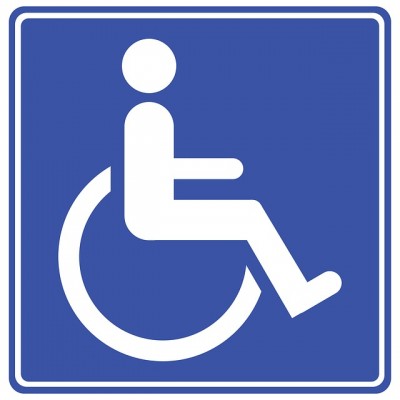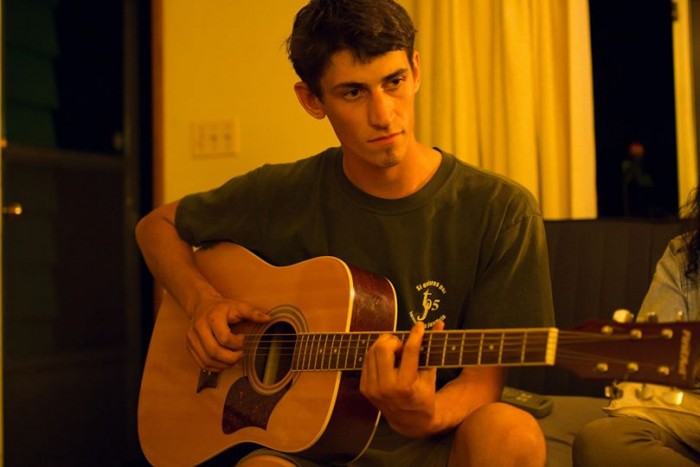
After a 28 hour flight, I landed in the US, the country of “Yankees” on a scholarship from the State Department, “SUSI” — Study of the US Institutes for Scholars. I had the opportunity to study “New Media and Journalism” at the University of Washington for a month.
From the first morning I was pretty amazed seeing the tiny light blue signboards indicating that a facility is accessible for differently-abled people (I omit the word “disabled,” because I don’t like it!) everywhere: in every nook and corner on the university premises and even on the street.
Coming from a Sri Lankan state university, it was bit unfamiliar for me to see such huge attention and care given for differently-abled students within an educational institute.
Sri Lanka is the country in South Asia with the highest literacy rate. Ninety-two percent percent of the population is able to read and write. Sri Lanka’s free education system is the backbone behind these attractive numbers. But when it comes to accessibility and other facilities in schools and universities for the differently-abled, we have less to be proud of.
The percentage of the differently-abled population of Sri Lanka increased rapidly because of the 30-year-old separatist civil war — many young people were injured during the war. Now it is essential to enhance the accessibility facilities for DA students in Sri Lanka — that way, their abilities can be part of the greater development of the country.
“Most of the conventional universities in Sri Lanka are having old buildings where no elevator facilities for Differently-abled Students,” said Dr. Lal Thilakarathne, senior lecturer from University of Kelaniya; one of the leading universities of Sri Lanka, via email.
He added that even getting to classes is a challenge.
“There’s no kneeling buses or wheelchair accessible trains or buses here. So if a differently-abled student is studying in a university the parents or the guardians of the student have to look after the student in the university premises,” he said.
The pathetic situation is that if the child is bright enough and willing to attend a university in Sri Lanka, even if they want to be a doctor or an engineer, if that very child is bound to a wheelchair, he has to give up his dream!
Back to the miracle drawn in front of my eyes in Seattle.

I followed the light blue sign boards. Talked with some students bound to wheelchairs and they led me to the basement of the Mary Gates building of the University of Washington, Seattle where the office that handles the “Disability Resources for Students (DRS)” is situated.
“We proudly serve about 1,300 UW students per year who need special assistance because of their physical or mental inability.” Jake Swanke, the Counseling Services Coordinator of the DRS started his discussion with me explaining the importance of having such a resource center within the university premises.
“Previously we were only serving a fraction of the students on campus who would identify themselves with an impairment. Now we not only providing counseling, we also provide differently-abled students special devices such as recorders and smart pens that helps to catch up the classes easily,” said Jon McGough, the assistant director of the DRS, University of Washington.
“We too work closely with the UW housing and food services to make sure that students with walking disabilities are getting an easy access for their classes.” He further described to me how the authorities are flexible with the concept of ensuring the same rights for everyone.
“More people getting served is both due to a higher rate of diagnoses nowadays, while also still to more awareness and comfort in the services for whichever students would be looking to have any impairment accommodated for.” Charles Warner, an undergraduate of University of Washington who studies Linguistics & Speech Hearing Sciences told me.

“I was with a disability that is not visible to everyone!” said Charles, who is on the autism spectrum & Attention Deficit hyperactivity Disorder (ADD). “But it was hard to me to follow the courses at the university because of my Spectrum Disorder. So I decided to meet a Counselor from the DRS and they helped me a lot to carry on my studies.”
He is a perfect example who’s leading his studies successfully with the aid of Disable Support Center of UW.
“Very few individuals who have disability have had higher education. In the study sample, only 1% of those who had visual disability and 3% of those who had speech disability had been to university.” A study done by the Ministry of Social Welfare of Sri Lanka brought out these facts in 2003 with the The National Policy on Disability of Sri Lanka.
“Students who have disability who fulfill other necessary criteria for admission, are presently required to face for an medical interview to gain admission. For even those who do gain admission to universities, freedom to select a particular area of study is curtailed by the limited choice of courses available to them. These procedures may require review to expand opportunities and provide equity for those students who have disabilities and who have completed the Advanced Levels successfully on par with students who don’t have disability.”
Authorities of Sri Lanka has identified the problem prevailing in the country and they had made some decisions on this matter like enhancing the annual quota of DA students for the state universities. But unfortunately the steps they’ve taken are not enough.
While the students at US universities like UW benefit from an environment that is more friendly for differently-abled students, the facilities in countries like Sri Lanka should be developed rapidly for the need.
I came out from the Mary Gates Hall and stared at the Mount Rainier against the bright blue sky, dreaming about the day that the doors of universities in the countries like Sri Lanka open even for differently-abled students.
Yes. All should have the right to wear the grad cap!


I really enjoyed reading your article and hearing your perspective. I believe it will happen in Sri Lanka, it has not been that long since the U.S. has made these accommodations for differently abled people. Good article!
Thank you very much. It’s pretty interesting to know that U.S has come to this stage in a short time period. Good example for the countries like Sri Lanka.
grate work brother….(Y)